カーカタログの疑問①ー排気量
今日は排気量の話をします。車のカタログや車の話になると「排気量」という言葉を耳にすると思います。例えばスペック紹介で「メルセデスAMG A45S 直列4気筒2.0リッターツインターボ!」とか「ダッチチャレンジャー V8 5.7リッターNA!」とか聞きますよね?排気量が大きいと凄いというのは伝わるんですが、じゃあ具体的にどの部分を言っているのかをエンジンを動かすメカニズムと一緒に説明しようと思います。
エンジンはピストン運動で動かしている
エンジンには注射器のシリンダーみたいなのが入っています。その中に空気とガソリンを入れて、圧縮し火をつけて爆発させ、力を発生させています。
因みに、、、小中学生のころライターをバラしたことはありませんか?ボタンを押して着火させる部分は実は電気が一瞬走り、それを燃料につけることで発火しています。車には「プラグ」というのがありますが、それに電気が走ることで着火し爆発させてます。
シリンダーの構造

エンジンの中にあるシリンダーは注射器みたいな円柱構造をしています。バルブと呼ばれるフタが付いており、ガソリン・空気・排気ガスが出入りします。シリンダー内の空気が膨張しピストンが押されて力が発生します。
シリンダーの直径は「ボア」、高さを「ストローク」と呼びます。「ロングストローク型」「ショートストローク型」というのはピストンの上下動が長いか短いかということを示しているわけです。
排気までのメカニズム

- 吸気側のバルブが開きピストンが下へ下がり、空気とガソリンが流入します。
- バルブが閉じ密閉空間になります。ピストンがシリンダー内の気体を圧縮します。
- プラグで着火し爆発して、ピストンが押され力が生まれます。
- 爆発後の気体はそれ以上爆発しません。排気バルブが開きピストンが排気ガスを押し出します。排気量はここで出す排ガスの量とシリンダー数をかけたものになります。
因みに、①②④はピストンが能動的に動いていますが、③は爆発によって受動的に動かされているので、力を発生させているのは③の時だけになります。(黒と白の矢印で区別しました。)
以上がエンジンが力を生み出すメカニズムです。
排気量の求め方
$$排気量(cc)=(\frac{ボア}{2})^2π×ストローク×シリンダー数$$
具体的に上の表の赤文字の数値で青文字の排気量が算出できます。ボア、ストロークはcmに換算しましょう。
$$(\frac{8.40}{2})^2×π×8.70×12=5785.61$$ヤナセは四捨五入してないんですね、、、笑
まあどうでもいいですが、このようにして排気量を求めることができます。エンジンの構造が少しわかれば当たり前になりますね。
ボアとストロークの比が違うとどうなるんだろうとか、もっとシリンダー数少ないけど排気量が一緒だとどうなるんだろうとかありますが、また今度その話をしますね。
- ランボルギーニ・アヴェンタドールS 爆弾バブリング&アフターファイヤ施工(鹿児島 Glanzcoat)

- ランボルギーニ アヴェンタドールSV 出張バブリング施工|埼玉対応・ドラゴンアフターファイヤ
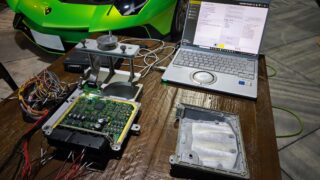
- 🎉【イベント出展レポート】フクヤマニメ2025 × KAWAII Tuning by mbFAST Tuning

- AutoTunerが最新モデルのECUアンロックに対応

- Lamborghini Urus S|ECUチューニング+バブリング+アイドリングストップ無効化【2023年式も対応】

- GLC43 AMG|ECUチューニング(Stage1)+バブリング+NOxセンサーエラー無効化【Car Service Firmament 宮城】
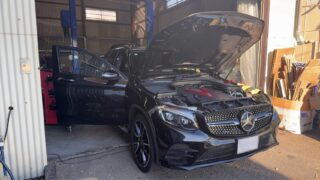
- Audi R8 Performance フルストレート バブリング ECUチューニング/O2・GPFカット【Glanzcoat 鹿児島】

- アバルト500コンペティツィオーネ ECUチューニング|OBD対応&バブリング施工
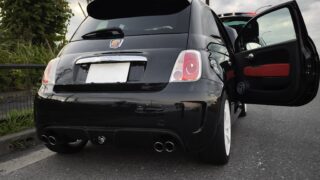
- レクサス IS500 USE30 ECUチューニング+リミッターカット施工しました!

- ついにGR86 ZN8 バブリング ECUチューニング対応しました!

- フェラーリ812GTS バブリング+マフラー交換後OPFカットのECU書き換えしました!

- アヴェンタドールSV ドラゴンアフターファイヤ バブリング施工出張しました

- BMW M8コンペティション ECUチューニング+バブリング 馬力アップ 日帰り
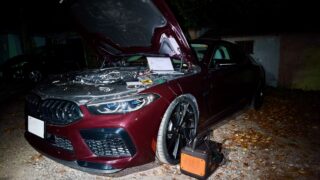
- ウラカン バブリング ドラゴンアフターファイヤ仕様 レブリミッター解除 ECU書き換えできました
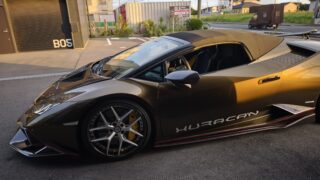
- 日本最速アヴェンタドールSVJ ドラゴンアフターファイヤ施工 ステージ2 ECUチューニング 岐阜出張施工

- ECUチューニング+バブリング – ランドクルーザー VJA300W 3.5L V6ツインターボ 馬力・トルク向上!
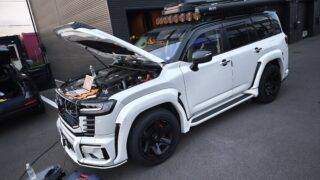
- フェラーリ Portofino M ECUチューニングで暴れ馬に! 弊社デモ車

- ポルシェ991 カレラ4s 55馬力/120Nmアップ ECUチューニング+バブリング施工! 純正マフラー

- 2025年式 レクサスLC500(新車) バブリング施工できました!
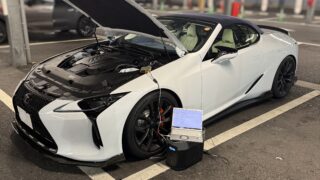
- A91スープラ ECU特殊ベンチロック解除でECUチューニング+バブリング施工!
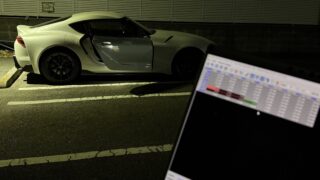
- アヴェンタドール ドラゴンアフターファイヤ LP700施工


